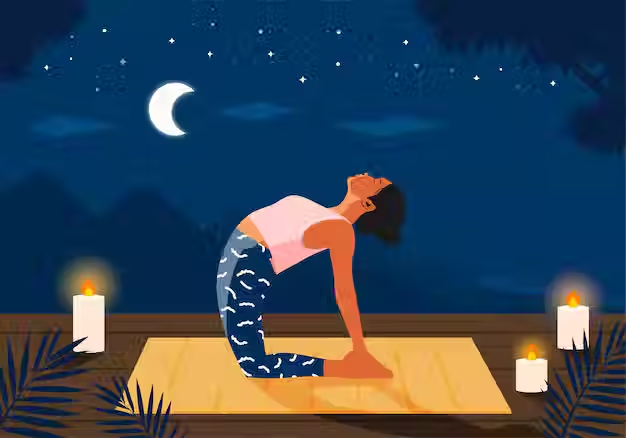Yoga and Breathing for Better Sleep: Nighttime Rituals That Work
- MedWords Editorial

- Jul 31
- 3 min read

If you’ve ever tossed and turned at night, you know how frustrating sleeplessness can be. From endless scrolling to a mind that won’t quiet down, sleep troubles have become a common struggle, especially for youngsters living in a hyperconnected world. Instead of turning to pills or quick fixes, ancient practices like yoga and breathwork offer a natural, effective solution.
Why Sleep Feels So Hard These Days
Sleep problems are often tied to stress, anxiety, blue light exposure, and irregular schedules. Our nervous system stays on high alert even when we’re in bed, making it hard to drift off. Yoga and mindful breathing work by activating the parasympathetic nervous system, helping the body transition into a state of rest.
How Yoga Improves Sleep
Yoga isn’t just a workout; it’s a holistic practice that combines movement, breath, and mindfulness. Research shows it:
• Reduces cortisol (the stress hormone)
• Calms the mind and reduces anxiety
• Relaxes tense muscles
• Regulates breathing and heart rate
Regular evening yoga can reset your body clock, making it easier to fall and stay asleep.
Nighttime Yoga Poses for Restful Sleep
1. Legs-Up-the-Wall (Viparita Karani)
• Lie on your back with your legs resting up against a wall.
• Relax your arms and shoulders.
• Breathe deeply for 5–10 minutes.
• Benefits: Improves circulation, relieves tired legs, and calms the mind.
2. Child’s Pose (Balasana)
• Kneel on the floor, sit back on your heels, and stretch your arms forward.
• Rest your forehead on the mat.
• Take slow, deep breaths for 1–2 minutes.
• Benefits: Releases tension in the back and hips, eases mental fatigue.
3. Supine Spinal Twist (Supta Matsyendrasana)
• Lie on your back, bring your knees to your chest, then drop them to one side.
• Extend your arms out in a T-shape and turn your head opposite your knees.
• Hold for 1 minute on each side.
• Benefits: Relieves lower back tension and aids digestion before sleep.
4. Reclined Bound Angle Pose (Supta Baddha Konasana)
• Lie on your back, bring the soles of your feet together, and let your knees fall open.
• Place one hand on your chest, one on your belly.
• Breathe slowly for 5 minutes.
• Benefits: Opens hips, reduces stress, and slows the heart rate.
Breathing Techniques to Calm the Mind
1. 4-7-8 Breathing
• Inhale for 4 counts, hold for 7, exhale for 8.
• Repeat 4–6 times.
• Effect: Slows heart rate and signals your body to sleep.
2. Box Breathing
• Inhale for 4 counts → Hold for 4 → Exhale for 4 → Hold for 4.
• Continue for a few minutes.
• Effect: Stabilizes mood and relaxes the nervous system.
3. Bhramari (Humming Bee Breath)
• Inhale deeply, exhale slowly while humming softly.
• Practice for 5 minutes before bed.
• Effect: Quiets racing thoughts and eases tension.
Create a Simple Night Ritual
1. Dim the lights an hour before bed to signal your brain it’s time to rest.
2. Do a short yoga flow with 3–4 calming poses.
3. Practice 5 minutes of breathwork lying in bed.
4. Avoid screens and instead read or journal to unwind.
Final Thoughts
Yoga and breathwork are more than fitness trends; they’re scientifically supported ways to improve sleep quality. With just 10–15 minutes of gentle movement and mindful breathing each night, you can shift from restless to deeply rested, naturally and sustainably.
Comments